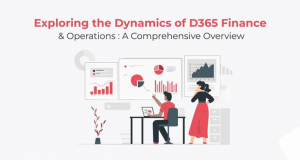
Streamline laboratory operations and improve data integrity with an easy-to-use LIMS that supports compliance with regulatory standards. The system supports standardized workflows, helps standardize sample naming, automates information transfers and features audit trails to support data integrity.
Established LIMS providers are familiar with auditors’ requirements and regularly update the software to align with evolving standards like those from FDA and MHRA. They also offer granular access control through group profiles.
Authentication
Laboratory tests and data provide critical information for healthcare professionals, patients, and medical research. Protecting sensitive data and ensuring that only authorized users have access to it are vital in clinical laboratories. LIMS software helps ensure that these essentials are met by providing a secure platform for managing sample, test, and result information.
LIMS software typically features strong password protection and two-factor authentication, which require a combination of passwords and other methods to verify a user’s identity. This prevents hackers from hijacking accounts and stealing data. The system also takes regular backups of data and provides a disaster recovery plan to safeguard against loss or corruption.
LIMS also supports the authentication of lab reports to confirm that they are authentic. This helps maintain the highest levels of professionalism and accuracy in lab reporting. In addition, labs can use a LIMS to securely communicate with referring physicians.
The best way to improve your LIMS security is through a combination of administrative and technical measures. Regularly updating the system and educating employees on security best practices can help reduce vulnerabilities. A LIMS with a configurable user interface and flexibility to adapt to specific workflows makes it easier to implement these measures. Additionally, a LIMS that has a scalable deployment model can grow with the laboratory and accommodate increased sample volumes and additional users without the need for expensive upgrades or overhauls.
Encryption
When a lab operates in a highly regulated environment and deals with personally identifying information security is paramount. A LIMS should be built to support the lab’s compliance goals by safeguarding data, providing a disaster recovery plan, and enabling staff to quickly identify and remediate system vulnerabilities.
LIMS software enables a lab to implement a variety of robust security measures including user authentication protocols, a centralized database with role-based permissions, encryption during storage and transmission, audit trails documenting all actions within the system, regular vulnerability assessments, and adherence to relevant ISO standards. LIMS systems can also help to streamline and improve workflow processes, standardize sample naming conventions, enhance data visualization, and more.
Choosing the right LIMS vendor is important as not all are created equal. Look for a company that prioritizes patient privacy, data security, and regulatory compliance, and who will work with you to develop an incident response plan and backup and recovery strategies. They should be willing to test their systems and provide you with a report identifying any system vulnerabilities. In addition, they should test every coding change with specialized tools to confirm that the code meets software engineering quality standards and does not introduce bugs that could be exploited by hackers. They should also have a dedicated team that manages and monitors the LIMS on your behalf.
Access Control
Once a user is authenticated, a lab can further control access to sensitive information by using role-based permissions that allow users to see only the features and data they need to perform their job. This principle is known as the ‘principle of least privilege’, and it limits the damage that hackers can cause with stolen credentials. The principle also controls access duration by forcing a session to close after a timeout or after a period of inactivity.
Consider the potential users of your LIMS, whether they are technicians, managers, or stakeholders. Then list the data sets you’re protecting and what you want them to be able to do with the information once it is stored in your LIMS. This will help you determine the level of protection that you need from your LIMS.
Some labs choose to encrypt data when storing it in the LIMS to protect it from hacking or other forms of unauthorized external access. A few LIMS vendors offer a solution that allows labs to encrypt data in transit as well as when it is at rest, providing even greater security. Additionally, many LIMS include audit trails that record the activities of a user and provide an accurate report of all changes made to the data. This helps labs meet regulatory compliance guidelines.
Audit Trails
As a security feature, audit trails provide detailed, time-stamped records of all data modifications. These transparent records make it easy to identify and address any discrepancies, errors or potential issues that might arise during sample handling or data analysis.
In addition, lab staffers often store data on digital files stored on their laptops, making it easy to share those files with collaborators. The convenience of this practice reduces the time spent manually recording or updating spreadsheets but also increases the risk that stolen or compromised laptops will let sensitive data fall into the wrong hands. By requiring all data access through the LIMS, a modern laboratory information management system eliminates the need for spreadsheets and removable media while tightening data security measures.
Finally, the ability to configure granular permissions in group profiles makes it easy to grant research collaborators, contractors and other external parties direct, but limited, access to the LIMS. In doing so, labs can ensure that any unauthorized changes to data are recorded and tracked with an audit trail.
LIMS software is an indispensable tool for labs wishing to improve efficiency, ensure regulatory compliance and maintain quality control standards. However, ensuring that your lab’s LIMS meets industry security frameworks requires more than just installing the latest version. By incorporating a comprehensive training program for all lab teams, updating SOPs periodically and maintaining an active dialogue with your lab’s LIMS vendor, you can minimize risks and avoid costly fines and suspension of accreditation. This Article is written by Morain khan – he is doing digital marketing Course after 10th & internship at DMC


